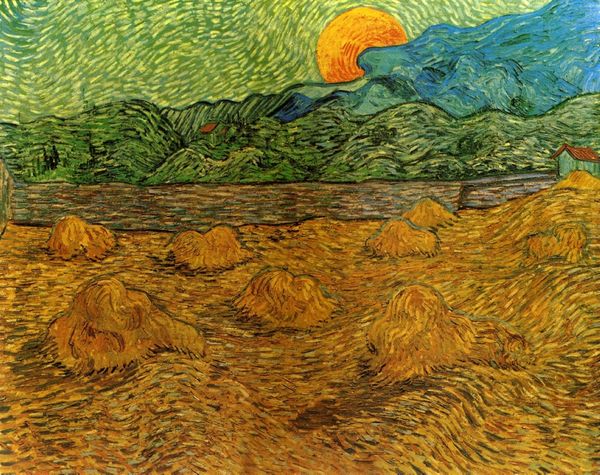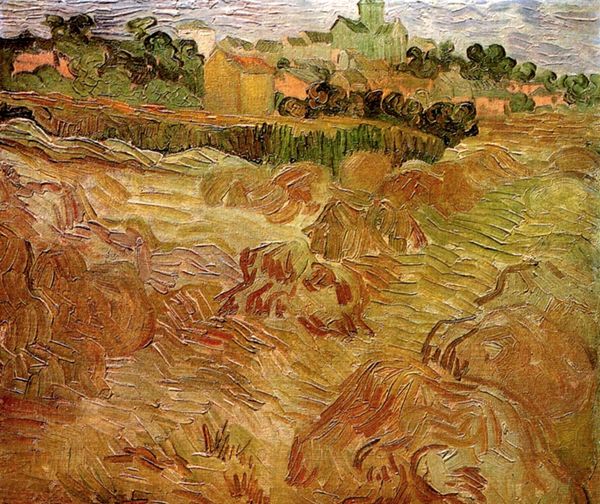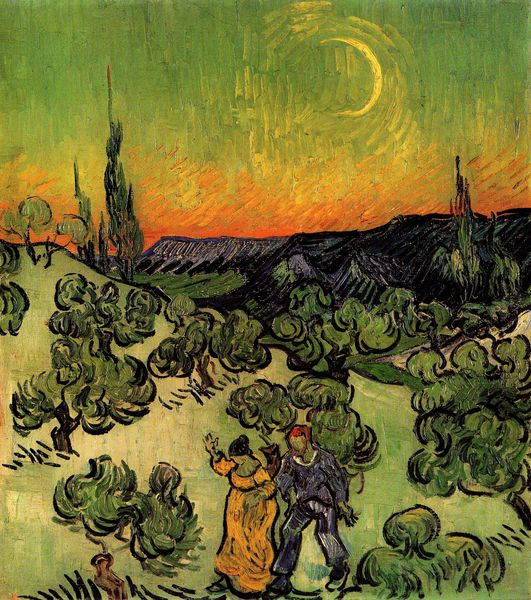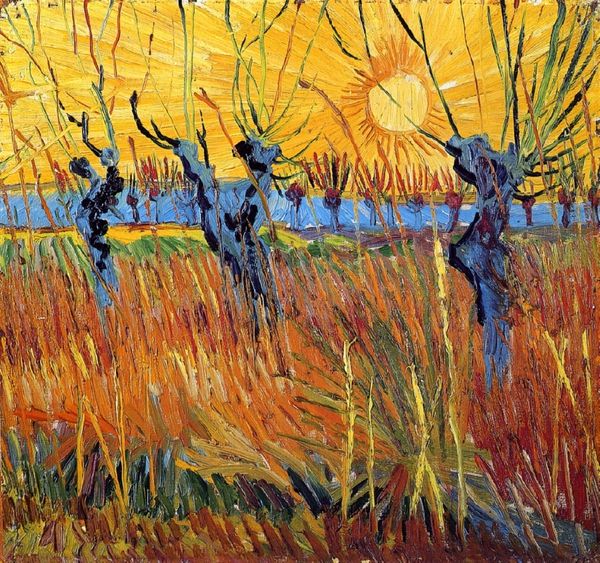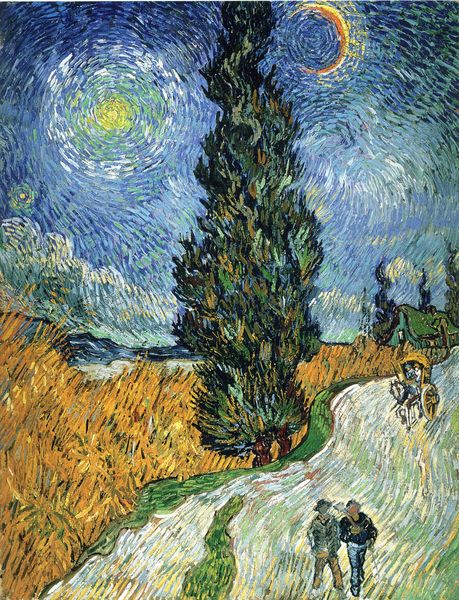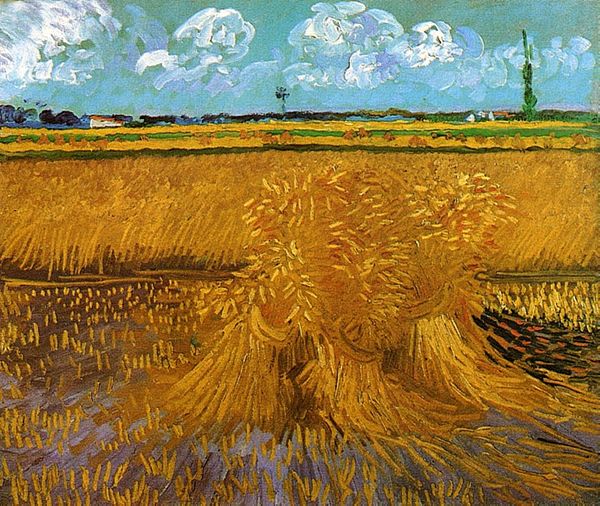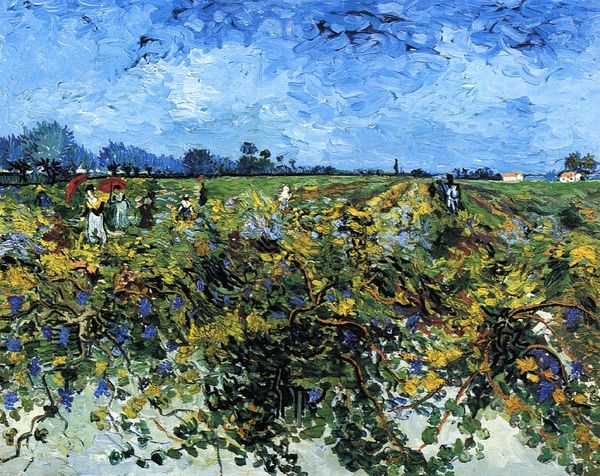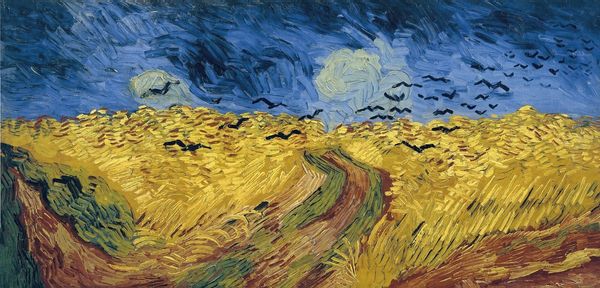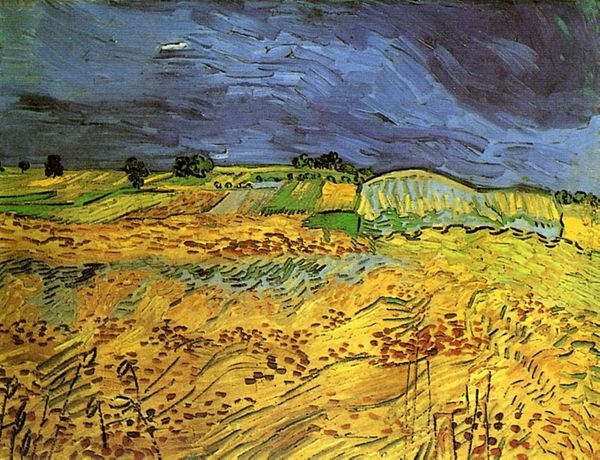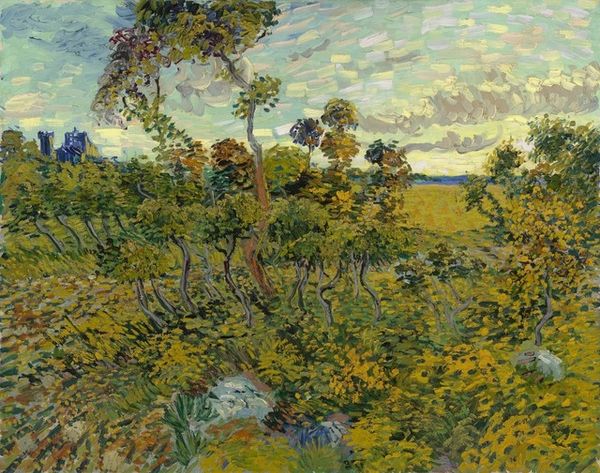
Dimensions: 73 x 91 cm
Copyright: Public domain
Vincent van Gogh painted "The Red Vineyards at Arles" using oil on canvas, possibly in 1888. This work, produced in the south of France, presents a vivid image of laborers harvesting grapes. The striking use of red and yellow hues is not just an aesthetic choice; it reflects the intense social and economic conditions of the time. Van Gogh's focus on rural labor brings to mind questions of class and the dignity of work, themes common in late 19th-century art. However, his post-impressionist style sets him apart from his contemporaries. While artists like Millet portrayed idealized versions of peasant life, Van Gogh captures something more visceral and emotionally charged. The Pushkin Museum's acquisition of this painting tells its own institutional history, reflecting evolving tastes and the growing recognition of Van Gogh’s contribution to modern art. By consulting period documents, we can better understand Van Gogh’s place within the complex art market and social structures of his time.
Comments
No comments
Be the first to comment and join the conversation on the ultimate creative platform.
